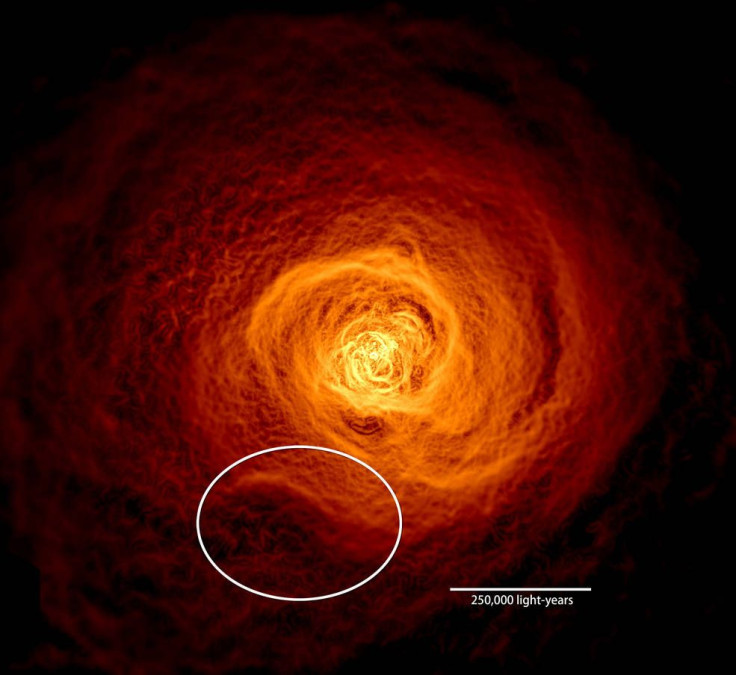Perseus Galaxy Cluster: Giant Wave Rolling Through, Causing Disruption

If you can imagine pouring cream into your coffee while you stir it, a plume, the eventual mix of the light and dark, and then apply that idea to space, you almost have a vague grip on the wave spanning the Perseus galaxy cluster. Then imagine it as large as two Milky Way galaxies.
This wave was the product of a smaller galaxy cluster grazing the edge of the Perseus cluster, disrupting the gas and causing it to shift around. This all happened billions of years ago, but thanks to technology from NASA, we have an idea of what the wave looks like now, and how it has evolved over time.
Read: 9 Stunning Photos From Space From NASA Images Library
NASA’s Chandra X-ray Observatory and other observations combined with computer simulations allowed researchers to create a mockup of what the wave would look like if it were visible. The cluster and its wave are made of unimaginably hot gas, so it can really only be seen based on the X-rays it gives off.
But those X-rays are enough for researchers to tell how the wave is moving within the cluster and come up with an impressive video of how the wave probably started and progressed. To do so researchers compiled 16 days worth of data and observations to create a detailed image of the cluster. The researchers at NASA then filtered and colored the image so that the wave and other patterns could be identified within the gas cluster.
When this data was compared to data collected on other merging clusters it matched a simulation that had a colder center, with the outer section three times warmer. During the simulation, when a smaller galaxy cluster flew by the larger, it resulted in a disturbance of the gas in the larger cluster. The hot mixed with the cool and created a churn-like movement, NASA said. This is what caused the large wave that’s currently crossing the Perseus galaxy cluster, researchers think.
There have been other waves too that have worked their way out so they are no longer visible. The waves only form under certain conditions. The magnetic field can’t be too strong or too weak or else the wave either won’t form at all or it will end up far larger than any wave that’s ever been observed. They’re a form of Kelvin-Helmholtz waves or clouds, which look a lot like waves and occur when two gases or fluids of different densities interact, in this case the cold and the hot gases.
The findings will appear in the June issue of Monthly Notices of the Royal Astronomical Society, but the abstract already is available online.
© Copyright IBTimes 2025. All rights reserved.



















